Picnic Games for Kids: Your Complete Guide to Outdoor Entertainment
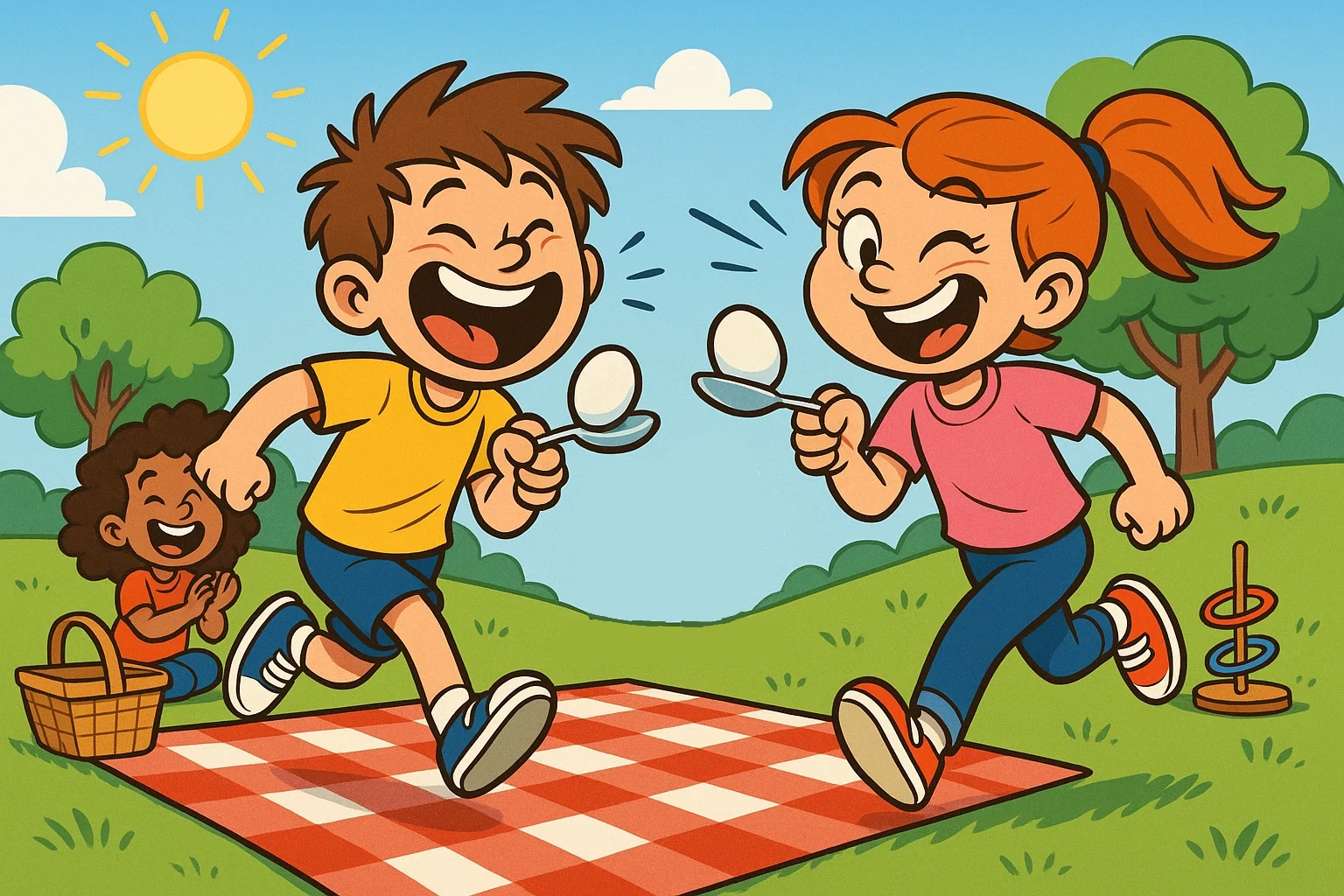
Planning a family picnic and wondering how to keep the kids entertained? You’re in the right place. Outdoor games transform an ordinary picnic into an unforgettable adventure, creating memories that last far beyond the afternoon. Whether you’re organizing a small family gathering or a large community event, the right mix of picnic games keeps children engaged, active, and happy.
This comprehensive guide covers everything from classic favorites to creative new activities. You’ll discover games for different age groups, energy levels, and group sizes—ensuring every child finds something they love.
Classic Picnic Games That Never Get Old
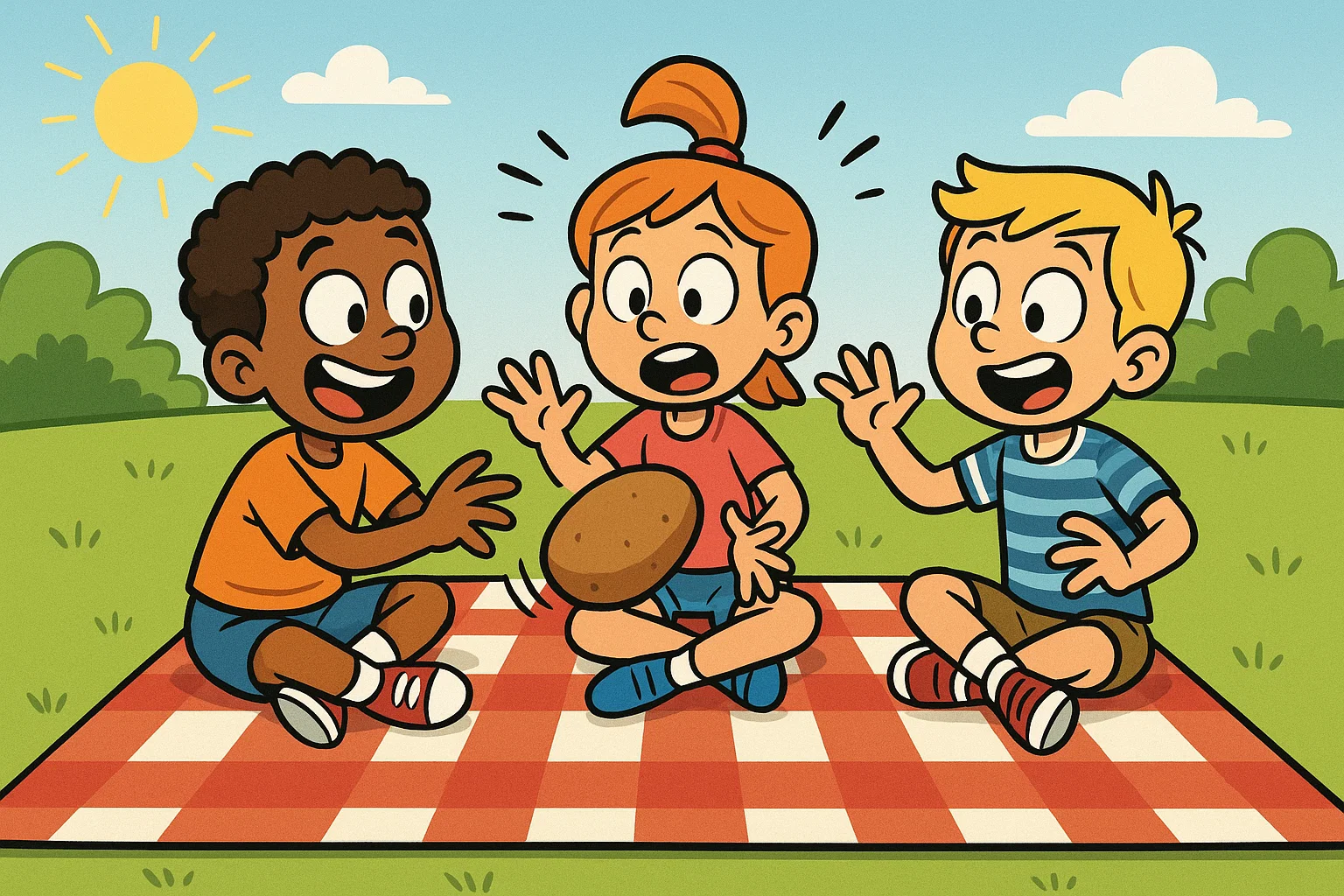
Some games have stood the test of time for good reason. These classics require minimal equipment and work beautifully in outdoor settings. They’re the foundation of any successful family picnic.
Duck Duck Goose
This beloved circle game gets kids moving and laughing within minutes. One player walks around the circle, tapping heads while saying “duck.” When they say “goose,” the tagged child chases them around the circle. The simplicity makes it perfect for mixed age groups.
Why it works: Duck Duck Goose teaches turn-taking while burning energy. Kids as young as three can participate, though older children often take on leadership roles naturally.
Red Light Green Light
Position one player as the “traffic light” at the finish line while others stand at the starting point. When they call “green light,” players move forward. “Red light” means freeze immediately. Anyone caught moving returns to the start.
Pro tip: This game helps younger kids develop impulse control and listening skills. The competitive element keeps older children engaged without overwhelming beginners.
Hot Potato
Pass a ball (or actual potato) around the circle while music plays. When the music stops, whoever holds the object is out. Continue until one winner remains.
Variation: Use a water balloon during summer picnics for extra excitement. Just be prepared for splashes and squeals!
Picnic Games by Age: Matching Activities to Development
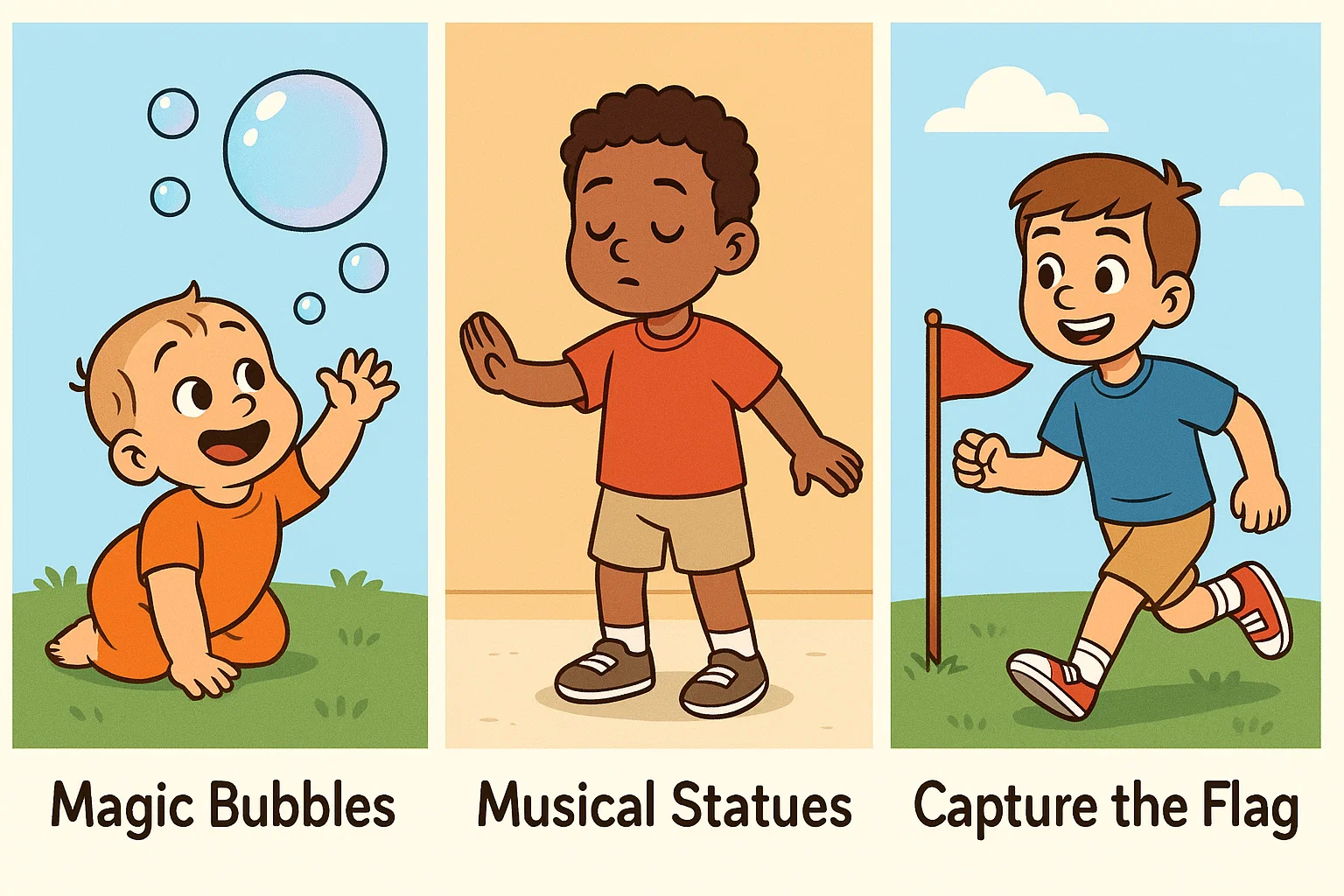
Different age groups need different types of play. Here’s how to choose appropriate games for various developmental stages.
Magic Bubble Catch Ball (Toddlers 1-3 Years)
Toddlers thrive on simple sensory experiences. Blow bubbles and encourage little ones to pop them. Progress to rolling a large, soft ball back and forth. These activities build hand-eye coordination without frustration.
Safety note: Always supervise toddlers during outdoor play. Bring extra supplies since young kids lose interest quickly, and having backup activities prevents meltdowns.
Simon Says Musical Statues (Preschoolers 4-5 Years)
Preschoolers love following directions and showing off their abilities. Simon Says challenges them to listen carefully: “Simon says touch your toes.” If you don’t say “Simon says” first, they shouldn’t move. Musical Statues adds a dance element—freeze when the music stops.
Why it matters: These games develop listening skills and body awareness. The clear rules help preschoolers feel confident and successful.
Capture the Flag Freeze Tag (Older Kids 6+ Years)
Older children crave strategy and teamwork. Capture the Flag divides players into two teams, each protecting their flag while trying to capture the opponent’s. Freeze Tag adds another layer: tagged players must freeze until teammates free them.
Group dynamics: These games teach collaboration and problem-solving. Kids learn to communicate, plan, and adapt strategies on the fly.
Races and Challenges: Test Your Speed and Coordination
Racing games bring out everyone’s competitive spirit. They’re excellent for burning energy and creating memorable moments.
Egg and Spoon Race
Balance an egg (hardboiled for safety) on a spoon while racing to the finish line. Dropped eggs mean returning to the start or taking a penalty. This classic requires steady hands and concentration.
Difficulty adjustment: Use plastic eggs for younger kids or raw eggs for brave older children. The challenge level changes dramatically with this simple switch.
Potato Sack Race
Each player steps into a large burlap sack and hops toward the finish line. The awkward movement triggers fits of laughter while building leg strength and balance.
Team option: Create relay teams where players pass the sack to the next racer. This format works well for larger groups at a family picnic.
Three-Legged Race
Pair up participants and tie adjacent legs together with a soft cloth. Teams must coordinate their movements to reach the finish line without falling. Communication becomes essential.
Expert insight: According to child development specialists, cooperative games like this one help kids practice negotiation and compromise. The physical challenge requires mental teamwork.
Water Games for Summer Picnics
When temperatures rise, water games provide cooling relief. These activities combine fun with refreshment.
Water Balloon Toss
Partners stand facing each other, tossing a water balloon back and forth. After each successful catch, take one step backward. The last team with an intact water balloon wins.
Strategic tip: Fill balloons with different water amounts. Some will be fragile, others more forgiving. This variation adds an element of chance alongside skill.
Water Balloon Spoon Race
Balance a water balloon on a large spoon while racing. This game combines the challenge of the egg race with the excitement of potential splashes. Players must move carefully to avoid dropping their balloon.
Group format: Set up relay teams. The first team to have all members complete the course wins. The competitive element drives engagement.
Bobbing for Apples
Fill a large tub with water and floating apples. Players must retrieve apples using only their mouths—no hands allowed. This traditional game feels refreshingly cool on hot summer days.
Hygiene consideration: Provide each child their own apple and tub if possible, or ensure everyone has clean hands before participating.
Quiet and Low-Energy Games for Relaxed Moments
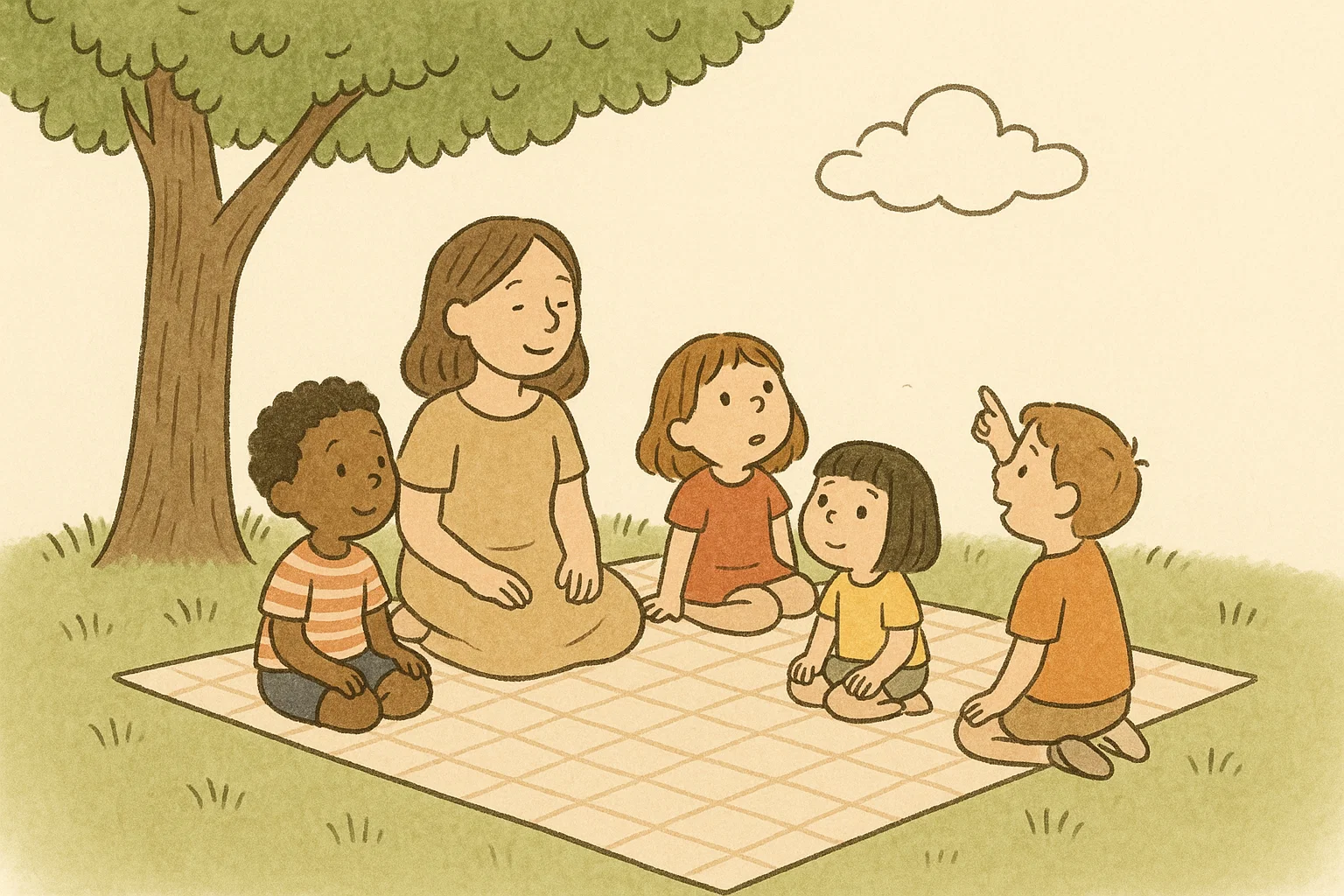
Not every moment needs high intensity. These calmer games provide mental engagement without physical exhaustion.
I Spy: Cloud Edition
Look at cloud formations and take turns describing what you see. “I spy something that looks like a dragon.” Others guess which cloud you’re describing. This game costs nothing and sparks imagination.
Educational value: Cloud watching encourages observation skills and creative thinking. It’s also a perfect transition activity when kids need to calm down before snacks.
Paper Airplanes Contest
Provide paper and markers for kids to design and decorate their aircraft. Hold competitions for longest flight, most accurate landing, or most creative design. The crafting process engages quiet kids while the flying excites active ones.
Scoring system: Create categories so every participant can win something. This approach builds confidence and celebrates different strengths.
Lawn Twister
Use spray chalk to create a giant Twister board on the grass. Players spin to determine where they place their hands and feet. The outdoor version allows for much larger groups than the traditional indoor game.
Bonus: This game doubles as a stretching activity. The unusual positions develop flexibility and body awareness.
Scavenger Hunts: Adventure and Discovery
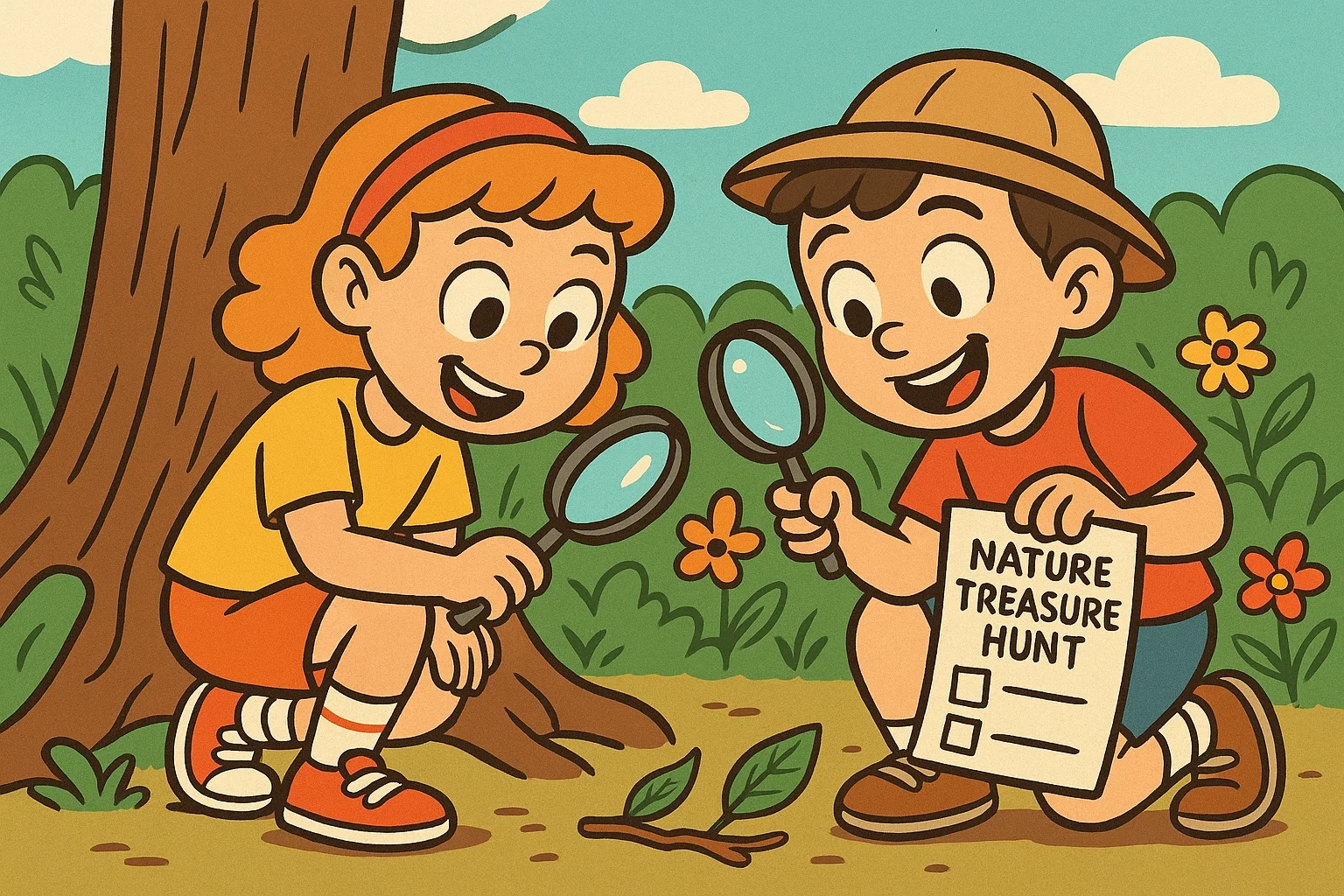
Scavenger hunts transform your picnic area into an exploration zone. They work for virtually any age and group size.
Nature Treasure Hunt
Create a list of natural items to find: smooth stone, feather, acorn, yellow flower, interesting leaf. Give each child a collection bag. First to find everything wins, or set a time limit and count who found the most.
Learning opportunity: Discuss each item found. Where did it come from? Why does it look this way? Simple questions deepen the experience beyond mere collection.
Color Hunt Challenge
Assign each player or team a color. They must find as many objects in that color as possible within 15 minutes. Compare collections at the end and discuss which colors were easiest and hardest to locate.
Photography twist: For older kids with phones, make it a photo hunt instead. They capture images without disturbing nature.
Collect Treasures for a Nature Bouquet
Gather flowers, interesting grasses, and branches to create beautiful arrangements. Provide small containers or mason jars. This activity combines scavenging with creative expression.
Reminder: Teach children to collect responsibly. Take only what’s abundant and avoid protected plants.
Throwing Games: Test Your Accuracy
Target games develop hand-eye coordination while offering measurable success. Kids love seeing their skills improve with practice.
Ring Toss Challenge
Set up pegs or bottles at various distances. Players throw rings, attempting to loop them over the targets. Assign different points to different distances, rewarding both accuracy and ambition.
DIY version: Use embroidery hoops as rings and fill plastic bottles with sand for stability. This setup costs less than ten dollars and provides hours of entertainment.
Cornhole Bean Bag Toss
This classic backyard game has become a picnic staple. Players toss bean bags toward a raised board with a hole. Bags through the hole score three points, bags on the board score one point. First team to reach 21 wins.
Skill progression: Younger kids can stand closer to the board. As they improve, gradually increase the distance to maintain an appropriate challenge level.
Frisbee Tricks Competition
Beyond simple throwing and catching, challenge players to learn tricks: behind-the-back catches, through-the-legs throws, or distance records. Create a friendly competition where everyone demonstrates their best move.
Safety reminder: Ensure adequate space between groups playing with frisbees. These discs travel far and can accidentally hit bystanders.
Big Group and Family Games: Everyone Plays Together
Large gatherings need games that include all participants. These activities strengthen family bonds and create shared joy.
Tug of War
Divide into two teams on opposite sides of a rope. Mark the center with a ribbon. Teams pull, trying to drag the other side past the center line. This traditional game requires pure strength and coordination.
Fair teams: Balance teams by mixing ages and sizes rather than all adults versus all kids. Closer matches create more excitement.
Blanket Volleyball
Stretch a blanket between two teams. Each team holds their blanket’s edges. Toss a ball back and forth using the blankets to catch and launch. The ball can’t touch the ground.
Why it works: This cooperative game requires communication and timing. Players must work together, making it ideal for teaching teamwork.
Human Knot Challenge
Groups of six to eight stand in a circle, reach across, and grab someone else’s hands. Without letting go, untangle yourselves back into a circle. This puzzle requires patience, communication, and creativity.
Facilitation tip: An adult should supervise to prevent frustration. Offer hints if groups get genuinely stuck, but let them solve most of the puzzle independently.
Popular Playground Games Adapted for Picnics
Some games feel synonymous with childhood. These playground classics transition beautifully to picnic settings.
Hopscotch
Use chalk or create lines with sticks and stones. Number squares one through ten. Players toss a marker and hop through the grid, skipping the marked square. Retrieve the marker on the return trip without losing balance.
Cultural note: Hopscotch exists in cultures worldwide, with regional variations. Learning different versions can be an educational experience.
Kickball Tournament
Set up bases using blankets, bags, or natural markers. One team pitches a large rubber ball while the other kicks and runs bases. This simplified baseball variant works for various skill levels.
Inclusive rules: Adjust rules for younger players—perhaps they get extra pitches or run to fewer bases. The goal is fun for everyone, not strict competition.
Dodgeball
Create two teams separated by a center line. Players throw soft balls, attempting to hit opponents below the shoulders. Hit players sit out until a teammate catches a ball, bringing one player back in.
Safety emphasis: Use soft foam balls, not hard rubber. Establish a “no headshots” rule strictly. The first team teaches kids to follow the rules for everyone’s safety.
Essential Tips for Successful Picnic Games
| Planning Element | Key Considerations |
| Equipment | Pack extras: balls, ropes, chalk, bags, water balloons |
| Space Assessment | Scout location beforehand; identify flat areas and hazards |
| Age Mixing | Prepare 2-3 games per age group; rotate activities regularly |
| Weather Backup | Have indoor-style games ready (cards, travel games) |
| Hydration Breaks | Schedule rest every 30 minutes; provide water and shade |
| Supervision | Assign adults to specific game stations for safety |
Equipment checklist: Beyond game supplies, bring first aid items, sunscreen, and extra clothes for water games. Preparation prevents disappointment when someone gets wet or scraped.
Timing matters: Schedule high-energy games after arrival, quieter activities after meals. This rhythm matches children’s natural energy patterns and aids digestion.
Making Picnic Games Inclusive and Accessible
The best picnic games welcome every child regardless of ability. Small modifications ensure no one sits on the sidelines.
Physical adaptations: For children with mobility differences, adjust game rules. In Red Light Green Light, let them move at their own pace. In relay races, shorten distances or allow wheelchair participation.
Sensory considerations: Some kids feel overwhelmed by loud games or unpredictable elements like water balloons. Provide quiet zones where they can participate in calmer activities without pressure.
Social inclusion: Team games should mix friend groups intentionally. Random assignment helps shy kids make new connections while preventing cliques from dominating.
Creating Your Perfect Picnic Game Schedule
A well-planned sequence keeps energy flowing smoothly throughout your family picnic. Here’s a sample three-hour timeline:
Hour 1 – Arrival & Setup (High Energy)
- Duck Duck Goose (15 min)
- Potato Sack Races (20 min)
- Free play with balls and frisbees (25 min)
Hour 2 – Meal & Transition (Low to Medium Energy)
- Lunch break (30 min)
- I Spy Cloud Edition (15 min)
- Nature Scavenger Hunt (15 min)
Hour 3 – Second Wind (Mixed Energy)
- Water Balloon Toss (20 min)
- Tug of War (15 min)
- Frisbee Tricks or free choice (25 min)
Flexibility principle: Read the group’s energy. If kids are exhausted, extend quiet time. If they’re bouncing off trees, add another active game.
Safety Considerations for Outdoor Games
Fun should never come at the cost of safety. These precautions protect kids while preserving spontaneity.
Sun protection: Apply sunscreen before games begin and reapply every two hours. Provide shaded rest areas where kids can cool down between activities.
Allergy awareness: Some games use natural materials. Know which children have plant allergies before starting nature hunts. Keep antihistamines accessible.
Boundary setting: Clearly mark play area boundaries. Explain which areas are off-limits due to hazards like steep slopes, water bodies, or traffic.
Emergency preparedness: Designate one adult as the first aid coordinator. Keep a stocked kit visible and accessible. Know the route to the nearest urgent care facility.
